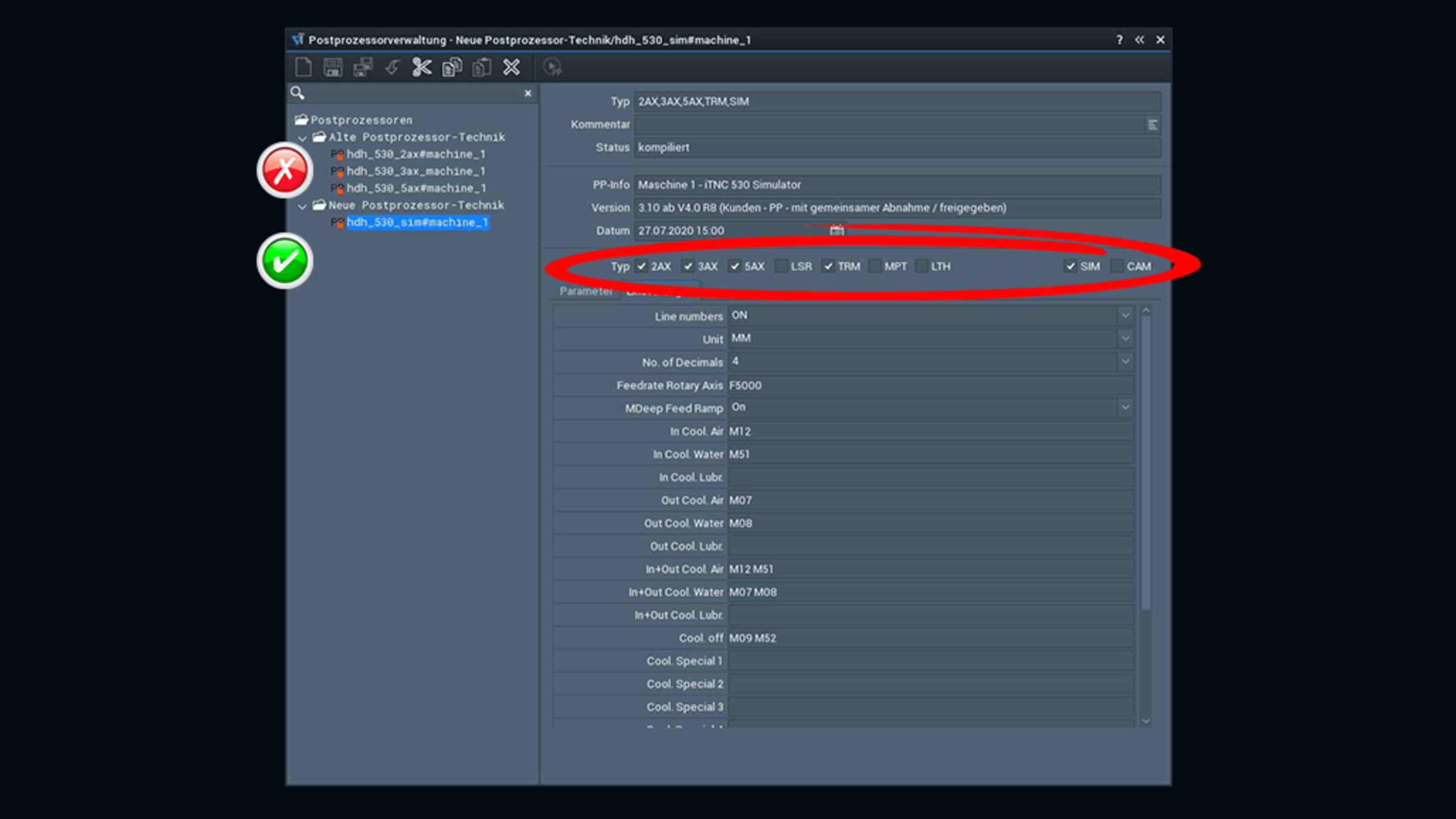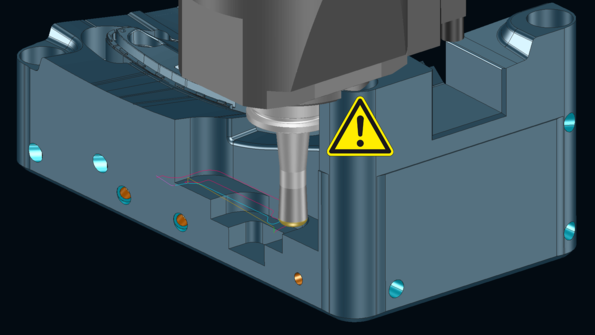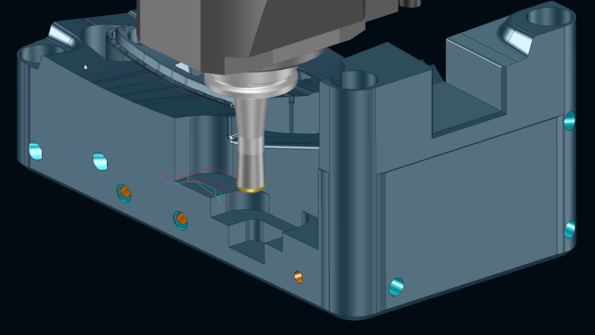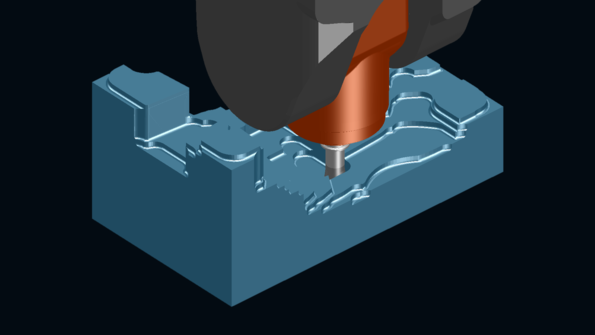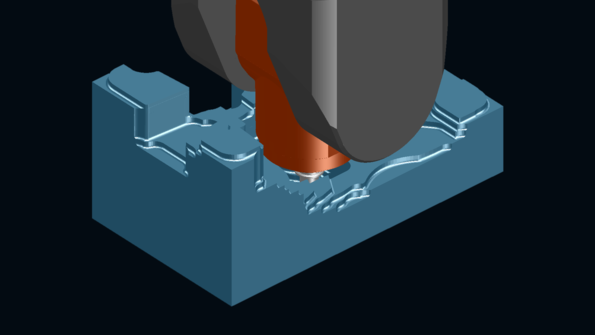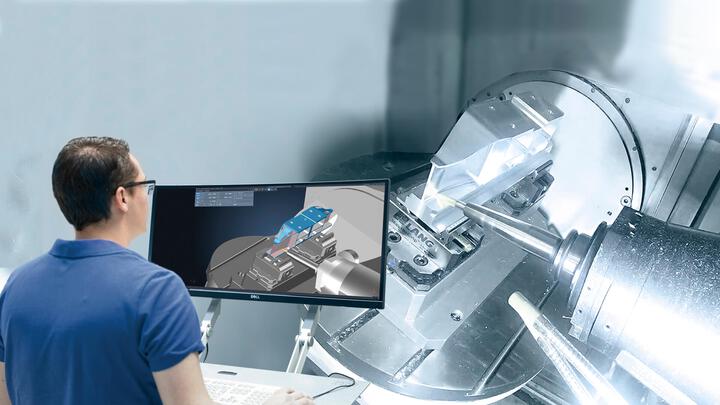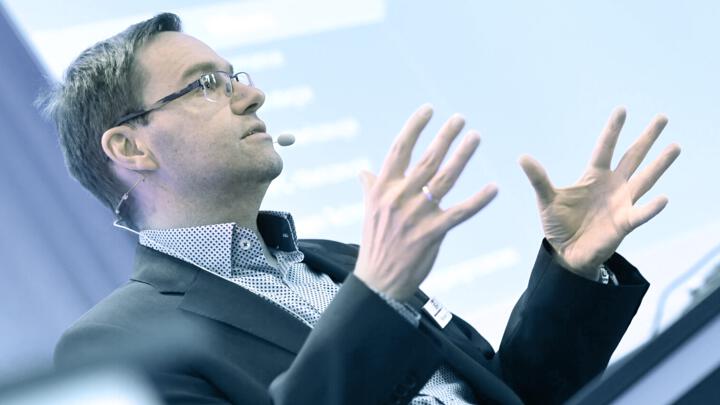Don´t worry about losing your head! We'll take you virtual.
Are you designing virtual HD heads of your machines to get a better overview of the actual manufacturing situation? Unfortunately, this is no longer possible as of Version 4.1....
Instead, we have something much better for you!
Why the virtual machine is a better alternative
- Precisely simulate the actual manufacturing environment with digital twins
- New in Version 4.1: Run collision checking for Tebis catalog machines
- Define and document setup directly on the virtual machine
- Use multiple reference points for CAM programming
- Precisely determine machine run times
- Access different kinematic configurations for a machine
- Insert comments
- New in Version 4.1: Individually edit Tebis catalog machines
Collision checking for Tebis catalog machines
Precise representation of the actual manufacturing environment makes it possible: As of Version 4.1, all toolpaths for machining operations on catalog machines can be collision-checked right in the CAM environment with the "Machine collision check" license. You can correct the toolpaths before NC output.
Fully accounting for the machine head
Quickly create collision-checked toolpaths: In the event of possible collisions with the machine head, milling areas are automatically reduced or are excluded from the machining operation in the NC calculation.
Your benefits:
- Greater process reliability
- Enormous time savings: Without automatic area reduction, you have to manually correct the collision after calculation and then recalculate the machining operation
- With area reduction, the shortest possible tools are used for every milling job, ensuring optimum cutting conditions
The "Programming with virtual machine" license also enables interactive rotation of the head or table in the machine kinematics around the C-axis. The advantage is particularly visible with asymmetrical heads. The maximum possible material is removed with the selected tool. Unnecessary residual stock is avoided. The interactive rotations are immediately accounted for in the area reduction.
Benefit from modern postprocessors
Everything in a single system: The latest post processor technology enables all toolpaths in an NC program – such as for 2-axis, 3-axis and 5-axis machining operations – to be output and transferred to the machine via a single postprocessor. Subsequent manual editing of the NC code is eliminated. The system also accounts for different kinematics and rotary axis limits of the virtual machines: For example, no special limits have to be specified for different machine heads at different tilt angles.
All details of the Tebis machining functions are implemented on a one-to-one basis in the postprocessor. For example, this includes additional feed rates, supplements for deep drilling, control-dependent cycle strategies for extended drilling functions, feature technology, the configuration of multiple reference points and full interaction with the CNC simulator.
In addition, all mappable control functions from the machine manufacturer are supported – accounting for the control version. Special machine cycles are integrated, as are improved RTCP functions for 5-axis simultaneous machining or working planes for optimal 5-sided machining.
The proven codes recommended by the manufacturer are implemented in the postprocessor templates. Only in this way can the performance scope of the control be precisely and fully utilized. Tebis postprocessors are also highly precise: They can be configured out to six decimal places and are therefore also perfectly suited for ultramodern machines with their requirements for extremely high precision.
You can directly and conveniently edit inputs for headers, footers, coolant and "inches/mm."
and with all these benefits, you don't have to worry about anything: Your postprocessors and machines – including catalog items, customer-specific products and complete virtual machines – are always stored in the latest Tebis format and are automatically compiled and provided to you in your download area.
